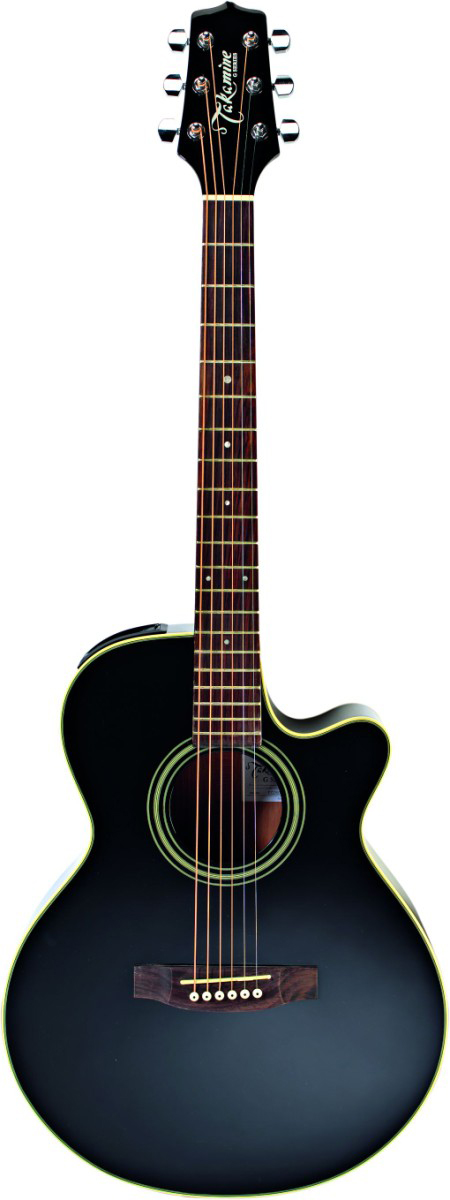MusicRadar Verdict
It's a solidly built, comfortable workhorse guitar with bags of amplified character and a name on the headstock that you can be proud of.
Pros
- +
Cracking price and solid performance.
Cons
- -
You couldn't quite call it 'aspirational', though…
MusicRadar's got your back

TGR156_gear_tak_git2.jpg

TGR156_gear_tak_det3.jpg
In the beginning, Takamine was the name of a craggy old mountain outside the Japanese town of Sakashita.
It seemed a strange place to set up a business making handcrafted acoustic guitars, but that's exactly what happened in 1962 when a family of luthiers opened their premises in the foothills.
Logically enough, the fledgling company took its name from the mountain and thus Takamine was born.
Over a 44-year timeline studded with guitar innovations, awards and artist endorsements, Takamine has become one of the most prominent names in the acoustic guitar sector.
You could argue that Takamine's success is down to the sheer quality of their premium instruments (built in Japan to shit-kickingly high standards).
We would counter that it's equally down to their G-Series: the entry-level range of Chinese instruments that was introduced several years ago to blanket acclaim.
Cheap guitars are the lifeblood of rock 'n' roll. And they don't come much cheaper than the EG260C, introduced by Takamine last June to bolster their budget line.
Overview
According to the sales rep TG spoke to, you won't ever see a G-Series electro-acoustic for less than this.
They're not a bloody charity, you know. A quick visual inspection of the EG260C pushes all the right buttons.
The body shape is known as the 'FXC'. Loosely translated, this means it's a little more compact than your average dreadnought and should theoretically excel at fingerpicked runs.
The basic outline is complemented by a generous single cutaway and a strap pin that doubles as the lead input, while the neck, body and headstock are all coated in black gloss (we also had the option to choose from either a Sunburst finish or Wine Red).
As a general rule of thumb, TG prefers to see the grain of our acoustic guitars, but we will grudgingly admit that the smoky finish works well with the white binding in this instance.
There's nothing wrong with the cornerstones of the EG260C's build, with a tough-looking heel and a good fretboard both inspiring confidence.
At the same time, we have seen tidier finishes than this. The soundhole and the edges of the fingerboard had a couple of little chips and dents, plus a few specks of white paint you would normally see on a builder's transistor radio.
None of which will have the slightest impact on playability or tone, however, but it did make TG feel a bit like we had been given a dirty fork in a restaurant.
As for tonewoods, the realists among you will have guessed that it's laminate woods all the way in this price bracket.
That's not the end of the world, though, especially when you consider that the EG260C has a spruce top and mahogany body, with mahogany forming the basis of the neck and a strip of rosewood making up the fingerboard.
The chrome tuners also look smart (although they haven't got the smoothest action we've ever felt), while the presence of a TP-4 preamp with three sliding EQs and a Gain knob suggests that we should be able to dig out a workable tone at the very least.
That said, an acoustic guitar should be able to perform without the help of Jim Marshall, so for the moment we're strumming with just the EG260C's natural response for amplification.
Despite claims of its finger-picking prowess (which is admittedly pretty good), we actually felt this guitar's strongest suit was pounding through chords with a light pick.
Sounds
It's got a great jangle and plenty of sparkle, and it should power a small jam session along nicely without the need for accompaniment.
OK, so we can't pretend this guitar has the kind of heart-stopping raw tone that will breathe new life into your old riffs or make you sit in spellbound silence after pushing though an open G chord, but it's far more than competent and retains a hint of the more expensive Takamine models.
Plugging in always covers a multitude of sins, and in this case the TP-4 preamp can either be used to complement or combat the sonic properties of the woods.
To tart up the basic tone (which starts out as a louder version of what you get unplugged), TG soon found ourselves sprinkling reverb into the equation, easing up the mid-range, adding more bass and even exploring what it would sound like with just a hint of delay.
This is the real joy of the electro-acoustic format: you can have a bit of fun with your sound instead of being defined by your tonewoods and tied to one sound.
Of course, it also makes discussing the tone of the EG260C a slightly open-ended question. Whether it's jangly, bassy or thudding depends on where your amp and preamp dials are pointing.
Inevitably, the option of amping this guitar also makes the physical playing experience much more expressive.
With every squeak of every string relayed by individual piezo pickups beneath the bridge, you start to capture the kind of nuances (vibrato, for instance) that are lost in the mire when you play the EG260C au naturel.
It all serves to cement the impression that this guitar should be plugged in whenever humanly possible and only played without an amp during a power cut.
Total Guitar is Europe's best-selling guitar magazine.
Every month we feature interviews with the biggest names and hottest new acts in guitar land, plus Guest Lessons from the stars.
Finally, our Rocked & Rated section is the place to go for reviews, round-ups and help setting up your guitars and gear.
Subscribe: http://bit.ly/totalguitar

"I've analyzed hundreds of players over the years. They're all a part of what I do": Clem Burke's 10 essential drum albums

“This is a beautiful, well-executed Les Paul, and that’s the sort of guitar you tend to hold onto for life. That’s as sound an investment as there is”: Gibson Les Paul Standard ‘50s Double Trouble review

“We were able to fire up a bass sound that was indistinguishable from the flavour of New Order’s Blue Monday in seconds”: EastWest Sounds Iconic review








